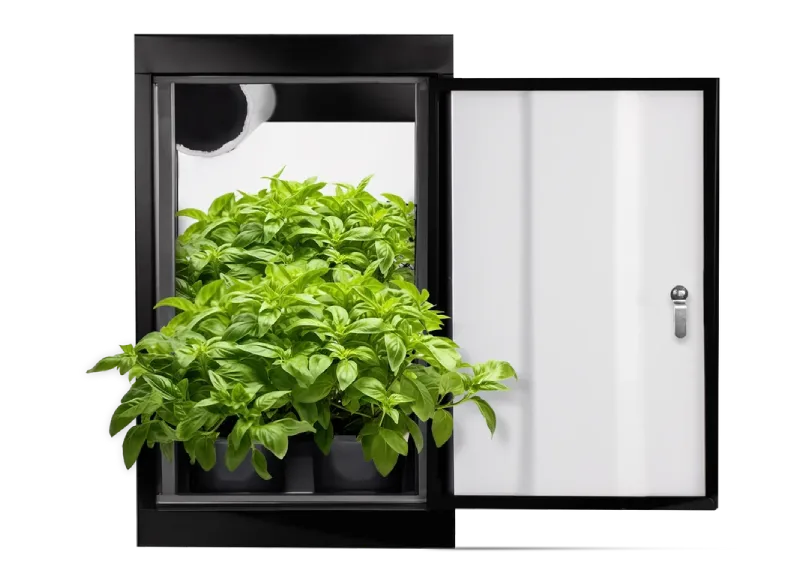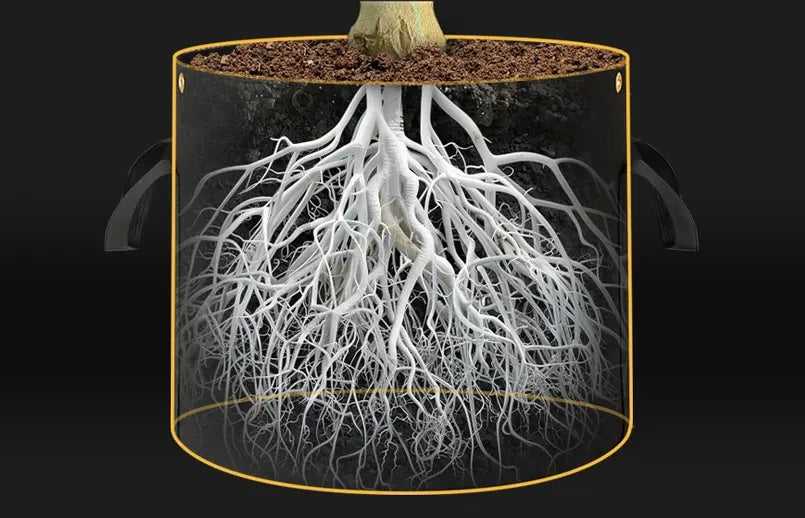
Hydroponic Grow Cabinet: Advanced Indoor Gardening Solutions
Hydroponic Grow Cabinets: Revolutionizing Indoor
Indoor gardening has come a long way, with hydroponic systems leading the charge in innovative, soil-free cultivation methods. Among the various hydroponic setups available, hydroponic grow cabinets have emerged as a popular choice for hobbyists and serious growers alike. These self-contained units offer a controlled environment for growing a wide range of plants, from leafy greens to flowering crops. This comprehensive guide will explore the benefits of hydroponic grow cabinets, how they work, the different types available, and best practices for maximizing your indoor gardening success.
Understanding Hydroponic Grow Cabinets
A hydroponic grow cabinet is a compact, enclosed structure designed to house a complete hydroponic system. These cabinets provide an ideal environment for plant growth by controlling factors such as light, temperature, humidity, and nutrient delivery. They are often equipped with integrated lighting systems, ventilation, and automated controls, making them an all-in-one solution for indoor gardening.

Benefits of Using Hydroponic Grow Cabinets
1. Space Efficiency
One of the most significant advantages of hydroponic grow cabinets is their space efficiency. These cabinets are designed to fit in small spaces, making them perfect for urban environments or homes with limited room for gardening. Their vertical design allows for multiple layers of plant growth, maximizing the use of available space.
2. Controlled Environment
Hydroponic grow cabinets provide a controlled environment that can be tailored to the specific needs of your plants. By regulating light, temperature, humidity, and CO2 levels, you can create optimal growing conditions year-round. This level of control leads to healthier plants and higher yields, regardless of external weather conditions.
3. Faster Growth and Higher Yields
Hydroponic systems are known for promoting faster plant growth compared to traditional soil-based methods. In a hydroponic grow cabinet, plants receive a constant supply of oxygen, water, and nutrients, which accelerates growth and boosts yields. This efficiency allows for multiple harvests per year, increasing overall productivity.
4. Pest and Disease Control
The enclosed design of hydroponic grow cabinets helps protect plants from common pests and diseases. By isolating the growing environment, you can minimize the risk of infestations and reduce the need for pesticides. Additionally, the controlled conditions make it easier to spot and address any issues before they spread.
5. Water Efficiency
Hydroponic systems use significantly less water than traditional soil-based gardening. The closed-loop system recirculates water, reducing waste and conserving this precious resource. This efficiency makes hydroponic grow cabinets an environmentally friendly choice for indoor gardening.
Types of Hydroponic Grow Cabinets
Hydroponic grow cabinets come in various configurations to suit different needs and preferences. Here are some of the most common types:
1. Basic Grow Cabinets
Basic grow cabinets are entry-level units that provide a simple, all-in-one solution for indoor gardening. They typically include a hydroponic system, grow lights, and basic ventilation. These cabinets are ideal for beginners or those with limited space and budget.
2. Advanced Grow Cabinets
Advanced grow cabinets offer more features and greater control over the growing environment. These units may include automated systems for nutrient delivery, temperature control, humidity regulation, and CO2 supplementation. Advanced grow cabinets are suitable for experienced growers who want to optimize their yields and fine-tune their growing conditions.
3. Multi-Chamber Grow Cabinets
Multi-chamber grow cabinets are designed to accommodate different stages of plant growth within a single unit. These cabinets typically have separate compartments for seedling/clone propagation, vegetative growth, and flowering. Multi-chamber designs allow for continuous harvesting by maintaining a steady supply of plants at various growth stages.
4. Stealth Grow Cabinets
Stealth grow cabinets are designed to blend seamlessly into indoor environments, resembling furniture such as cabinets, closets, or dressers. These units are ideal for growers who want to keep their gardening activities discreet. Stealth grow cabinets often feature soundproofing, odor control, and low-noise operation to maintain a low profile.
Key Components of Hydroponic Grow Cabinets
To fully understand how hydroponic grow cabinets work, it's essential to familiarize yourself with their key components:
1. Hydroponic System
The hydroponic system is the heart of the grow cabinet, providing the medium through which plants receive water, nutrients, and oxygen. Common hydroponic systems used in grow cabinets include:
- Deep Water Culture (DWC): Plants are suspended in a nutrient-rich water solution, with their roots submerged and oxygenated by an air pump.
- Nutrient Film Technique (NFT): A thin film of nutrient solution flows over the plant roots, which are supported by a sloped channel.
- Ebb and Flow (Flood and Drain): The growing medium is periodically flooded with nutrient solution and then drained, allowing the roots to absorb nutrients and oxygen.
- Aeroponics: Plant roots are suspended in the air and misted with a nutrient solution, providing high levels of oxygen and nutrient absorption.
2. Grow Lights
Grow lights are crucial for providing the artificial light needed for photosynthesis in an indoor environment. Most hydroponic grow cabinets use LED lights due to their energy efficiency, low heat output, and customizable light spectrums. Some cabinets may also use fluorescent or HID lights, depending on the specific needs of the plants.
3. Ventilation and Airflow
Proper ventilation is essential for maintaining optimal temperature, humidity, and CO2 levels within the grow cabinet. Ventilation systems typically include exhaust fans, intake fans, and air filters to ensure a constant flow of fresh air. This helps prevent mold and mildew growth, regulates temperature, and provides plants with the CO2 they need for photosynthesis.
4. Temperature and Humidity Control
Maintaining the right temperature and humidity levels is crucial for healthy plant growth. Hydroponic grow cabinets often come with built-in sensors and controllers to monitor and adjust these parameters. Heating and cooling elements, humidifiers, and dehumidifiers can be used to create the perfect growing environment.
5. Nutrient Delivery System
Automated nutrient delivery systems simplify the process of providing plants with the essential nutrients they need. These systems can be programmed to deliver precise amounts of nutrient solution at specific intervals, ensuring consistent and optimal feeding. This automation reduces the risk of nutrient deficiencies or overfeeding.
Setting Up Your Hydroponic Grow Cabinet
Setting up a hydroponic grow cabinet involves several steps to ensure a successful growing experience. Here’s a detailed guide to get you started:
1. Choose the Right Location
Select a location for your grow cabinet that is easily accessible, has a stable temperature, and is free from drafts. Ensure there is a nearby power outlet for plugging in the cabinet’s components. If noise or light leakage is a concern, consider placing the cabinet in a discreet location, such as a closet or spare room.
2. Assemble the Cabinet
Follow the manufacturer’s instructions to assemble your hydroponic grow cabinet. This typically involves setting up the frame, installing the grow lights, and connecting the ventilation system. Ensure all components are securely fastened and in proper working order.
3. Install the Hydroponic System
Set up the hydroponic system according to the chosen method (DWC, NFT, Ebb and Flow, or Aeroponics). Fill the reservoir with water and add the appropriate hydroponic nutrients. Ensure the nutrient solution is well-mixed and at the correct concentration.
4. Calibrate Sensors and Controllers
Calibrate any built-in sensors and controllers to monitor and regulate temperature, humidity, and CO2 levels. Set the desired parameters based on the specific needs of the plants you intend to grow. This step ensures that the growing environment is optimized for plant health and productivity.
5. Start Your Plants
Plant seeds or clones in the growing medium and place them in the hydroponic system. Ensure the plants are adequately spaced to allow for proper airflow and light penetration. Monitor the plants closely during the initial stages to ensure they adapt well to the hydroponic environment.
Best Practices for Hydroponic Grow Cabinets
To achieve the best results with your hydroponic grow cabinet, follow these best practices:
1. Monitor and Adjust Light Cycles
Different plants have varying light requirements for different growth stages. For example, leafy greens may thrive with 16-18 hours of light per day, while flowering plants may need 12 hours of light followed by 12 hours of darkness. Adjust the light cycles accordingly to support healthy growth and maximize yields.
2. Maintain Optimal Temperature and Humidity
Consistently monitor and adjust the temperature and humidity levels within the grow cabinet. Most plants prefer temperatures between 70-85°F (21-29°C) and humidity levels between 40-60%. Use heaters, coolers, humidifiers, or dehumidifiers as needed to maintain these conditions.
3. Regularly Check and Replenish Nutrient Solution
Hydroponic systems rely on a nutrient-rich solution to feed the plants. Regularly check the nutrient concentration and pH levels to ensure they remain within the optimal range. Replenish the solution as needed to prevent nutrient deficiencies and promote healthy growth.
4. Prune and Train Plants
Pruning and training plants can help maximize light penetration and airflow within the grow cabinet. Remove dead or yellowing leaves, and use techniques such as topping, low-stress training (LST), or trellising to shape and support plant growth.
5. Keep the Cabinet Clean
Maintaining cleanliness within the grow cabinet is essential for preventing pests and diseases. Regularly clean the hydroponic system, grow lights, and ventilation components to remove dust, algae, and other debris. Sanitize tools and equipment to minimize the risk of contamination.
Troubleshooting Common Issues
Even with the best practices, you may encounter some challenges while using a hydroponic grow cabinet. Here are solutions to common issues:
1. Light Burn
Excessive light exposure can cause light burn, characterized by yellowing or browning of leaves. Adjust the height of the grow lights or reduce the light intensity to prevent this issue. Ensure there is adequate space between the lights and the plant canopy.
2. Nutrient Imbalances
Nutrient imbalances can lead to deficiencies or toxicities, affecting plant health. Regularly test the nutrient solution and adjust the concentration as needed. Use a balanced nutrient mix and follow the manufacturer’s recommendations for dosage.
3. Temperature Fluctuations
Inconsistent temperatures can stress plants and hinder growth. Use thermostats and heaters or coolers to maintain a stable temperature within the grow cabinet. Insulate the cabinet if necessary to prevent temperature fluctuations.
4. Pest Infestations
Although grow cabinets reduce the risk of pests, infestations can still occur. Inspect plants regularly and take preventive measures such as using sticky traps, neem oil, or beneficial insects. Maintain good air circulation to deter pests.
Hydroponic grow cabinets offer a revolutionary solution for indoor gardening, providing a controlled environment that maximizes plant health and yields. Their space efficiency, versatility, and ability to create optimal growing conditions make them an excellent choice for both beginners and experienced growers. By understanding the benefits, components, and best practices for hydroponic grow cabinets, you can achieve outstanding results and enjoy the satisfaction of thriving indoor gardens. Whether you’re growing leafy greens, herbs, or flowering plants, a hydroponic grow cabinet can transform your gardening experience and lead to bountiful harvests year-round. Embrace this innovative technology and take your indoor gardening to new heights.


